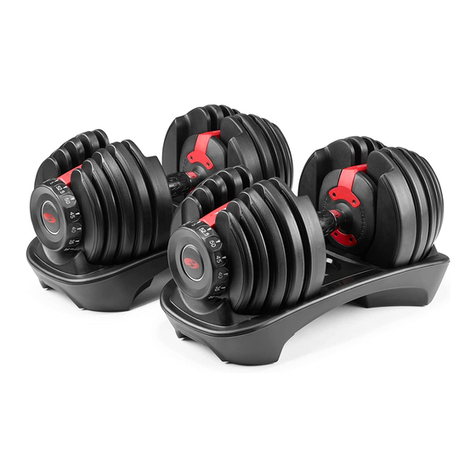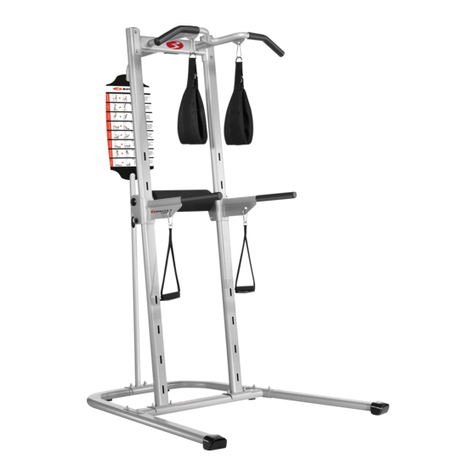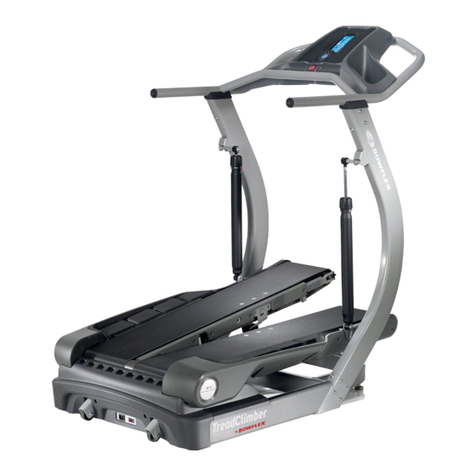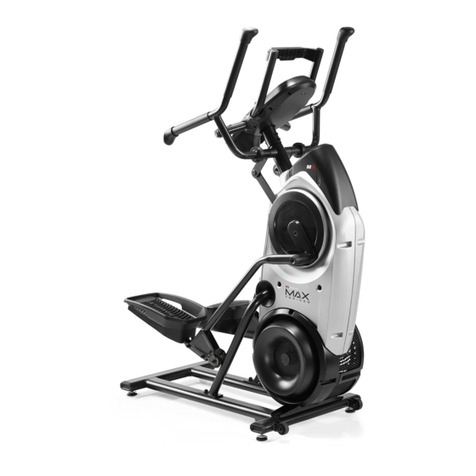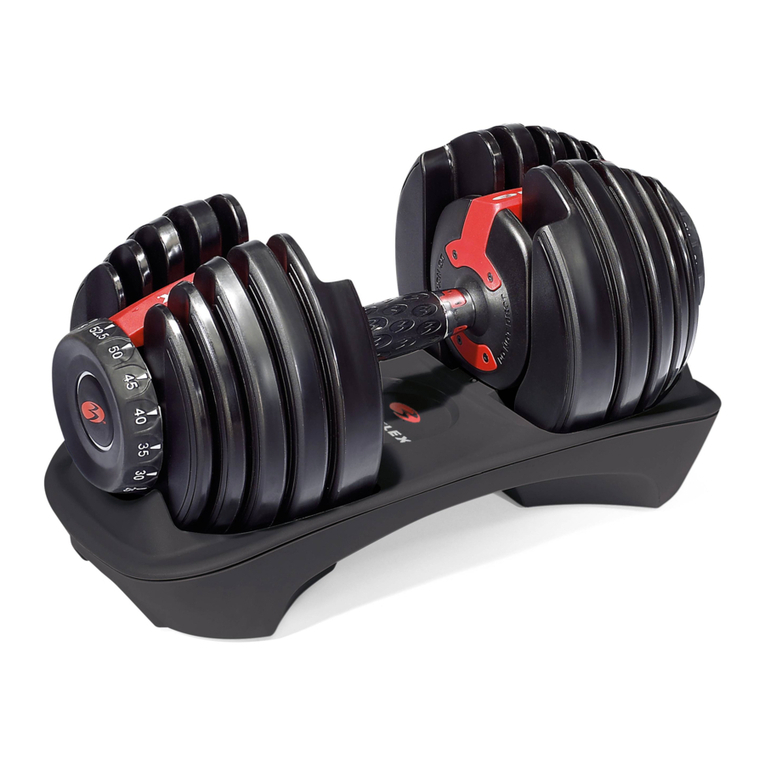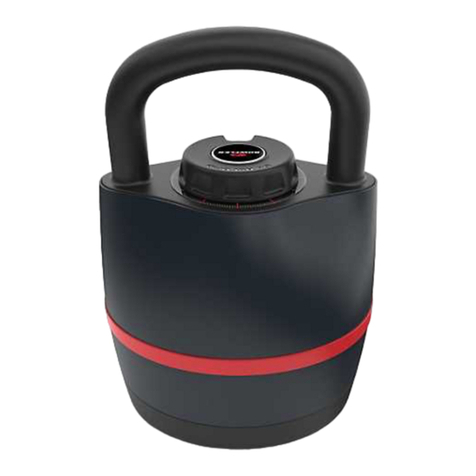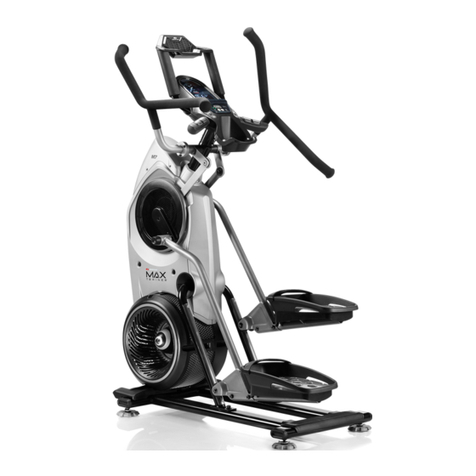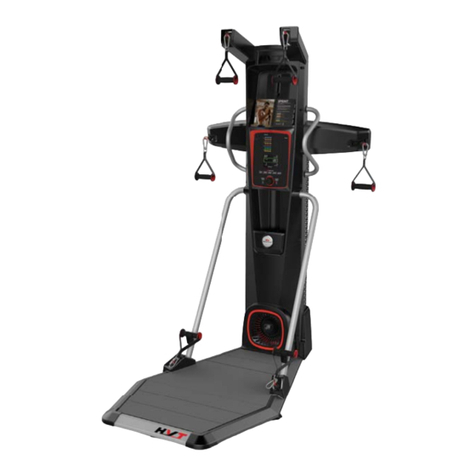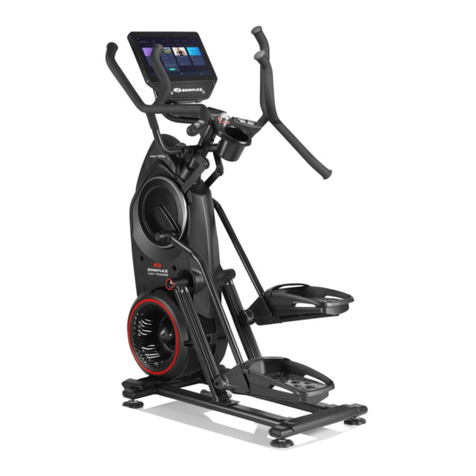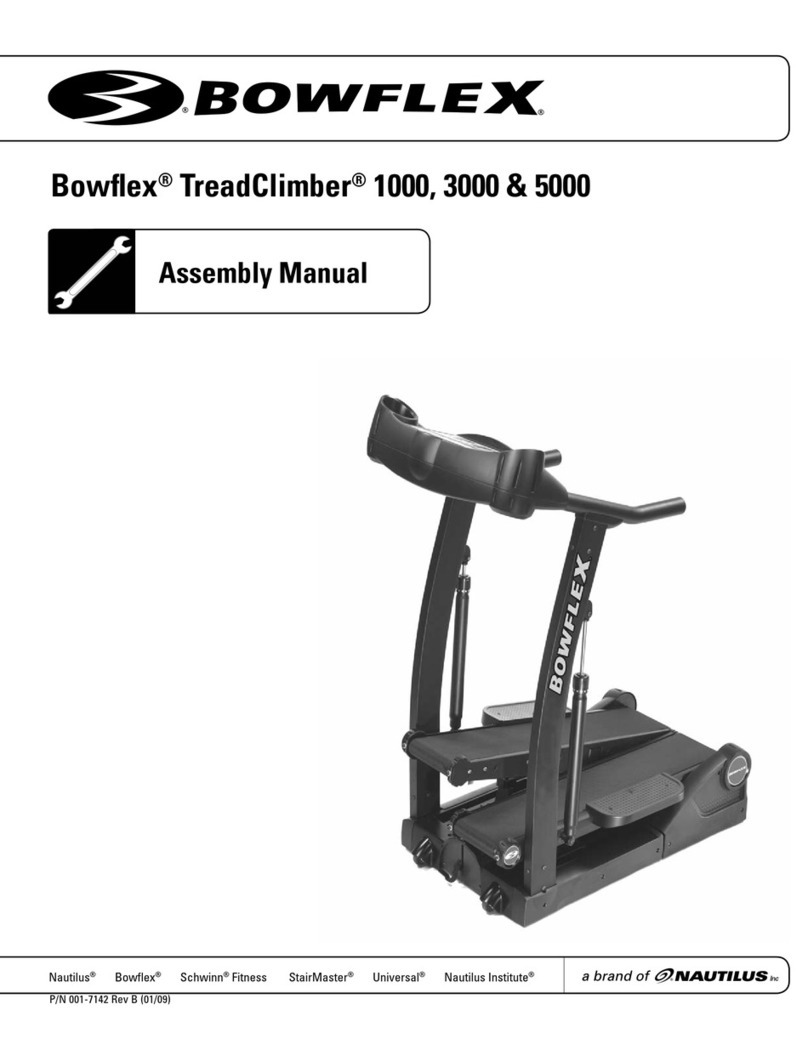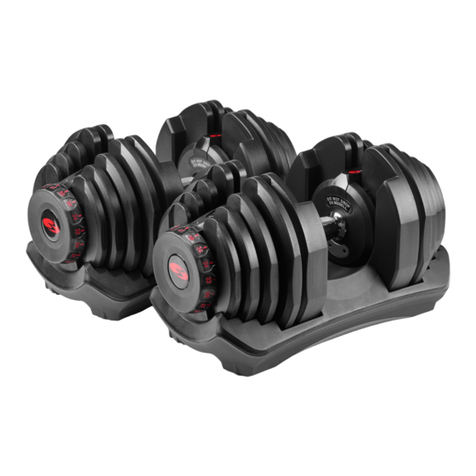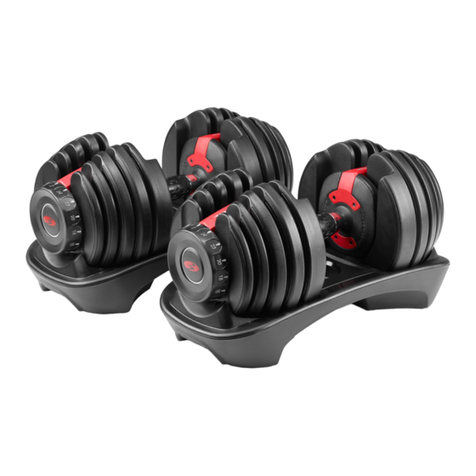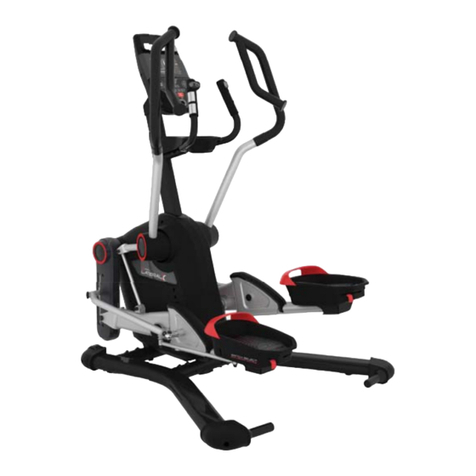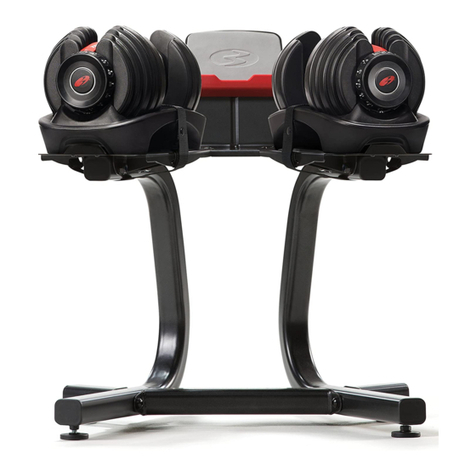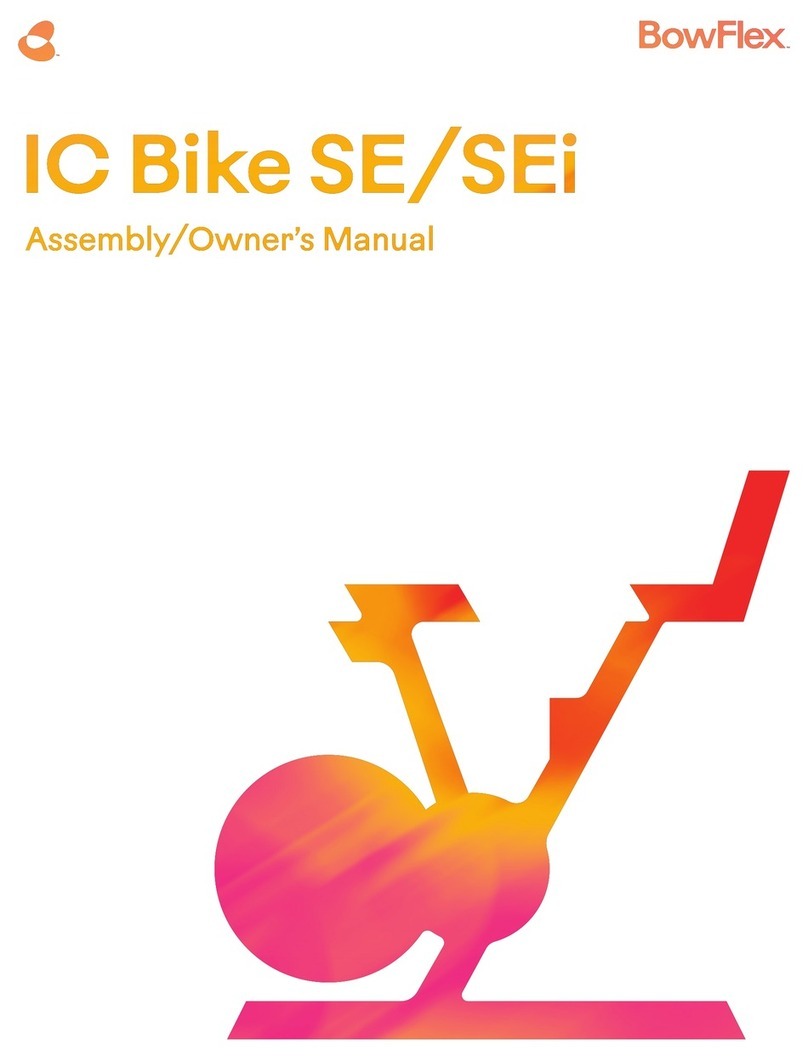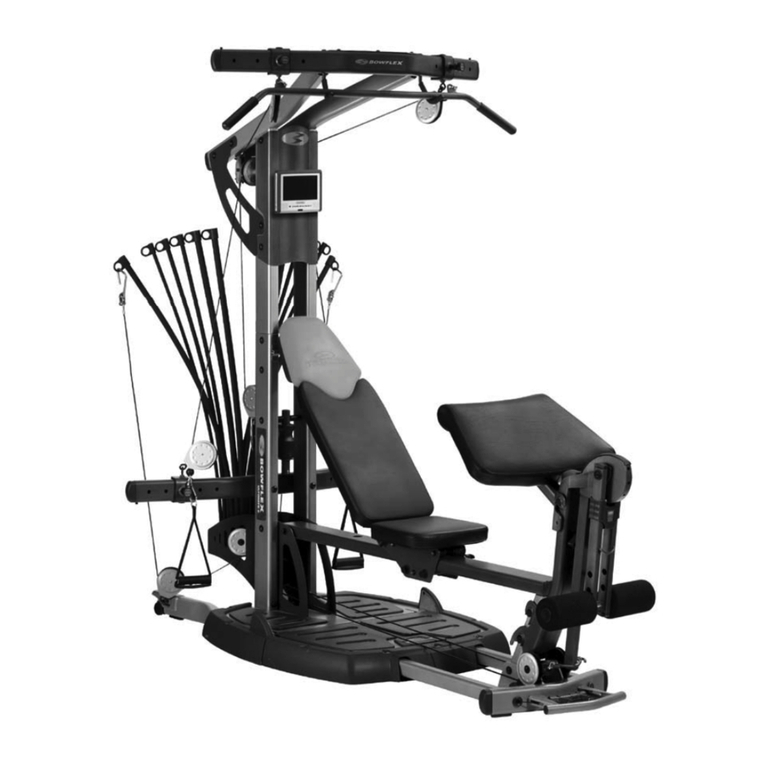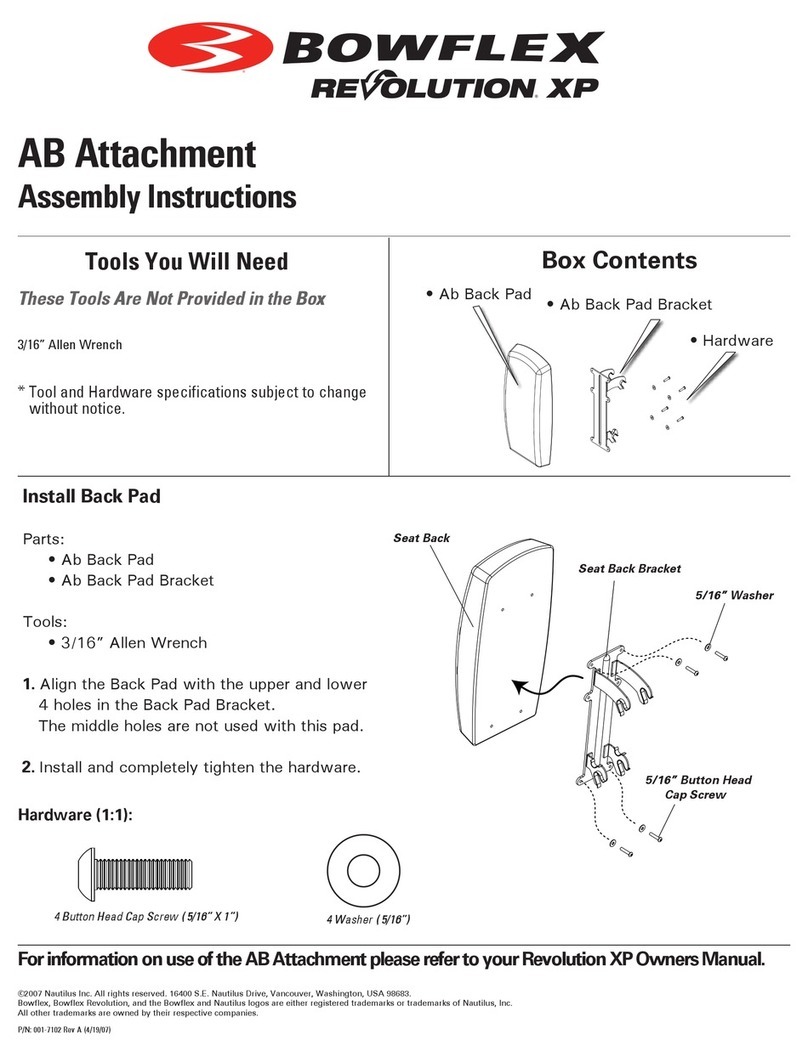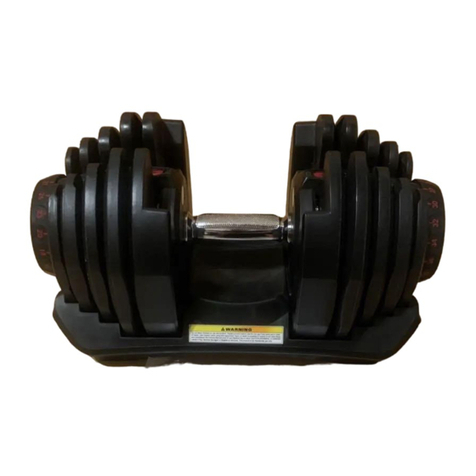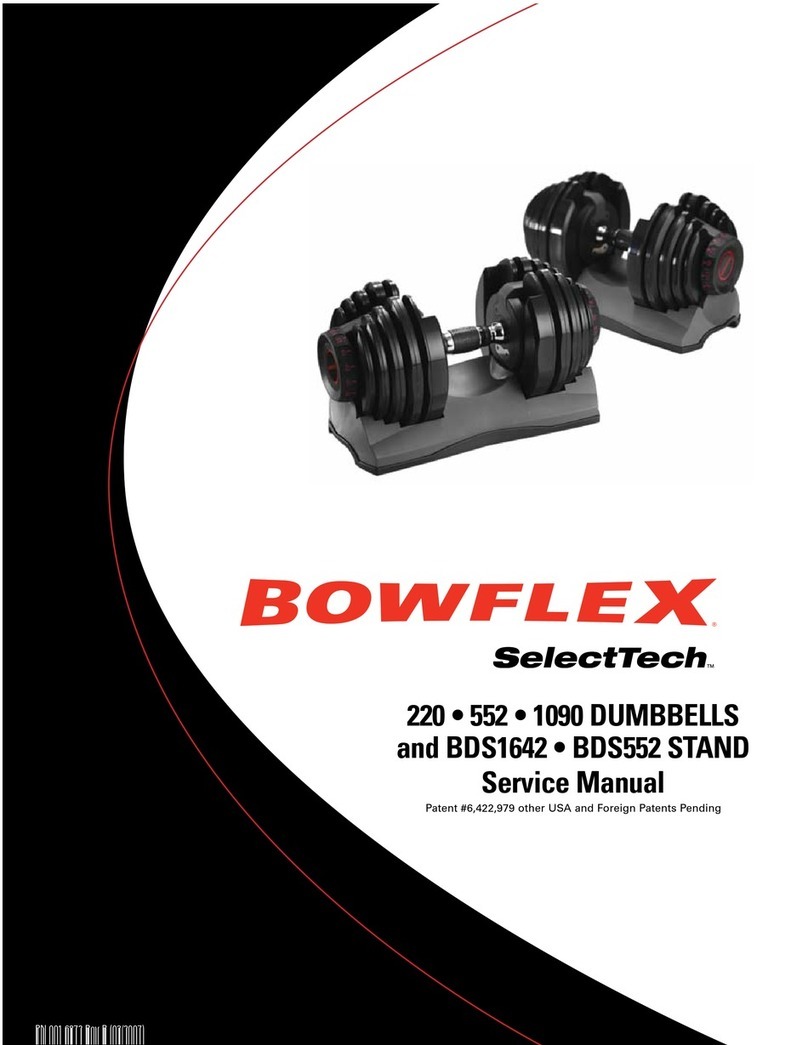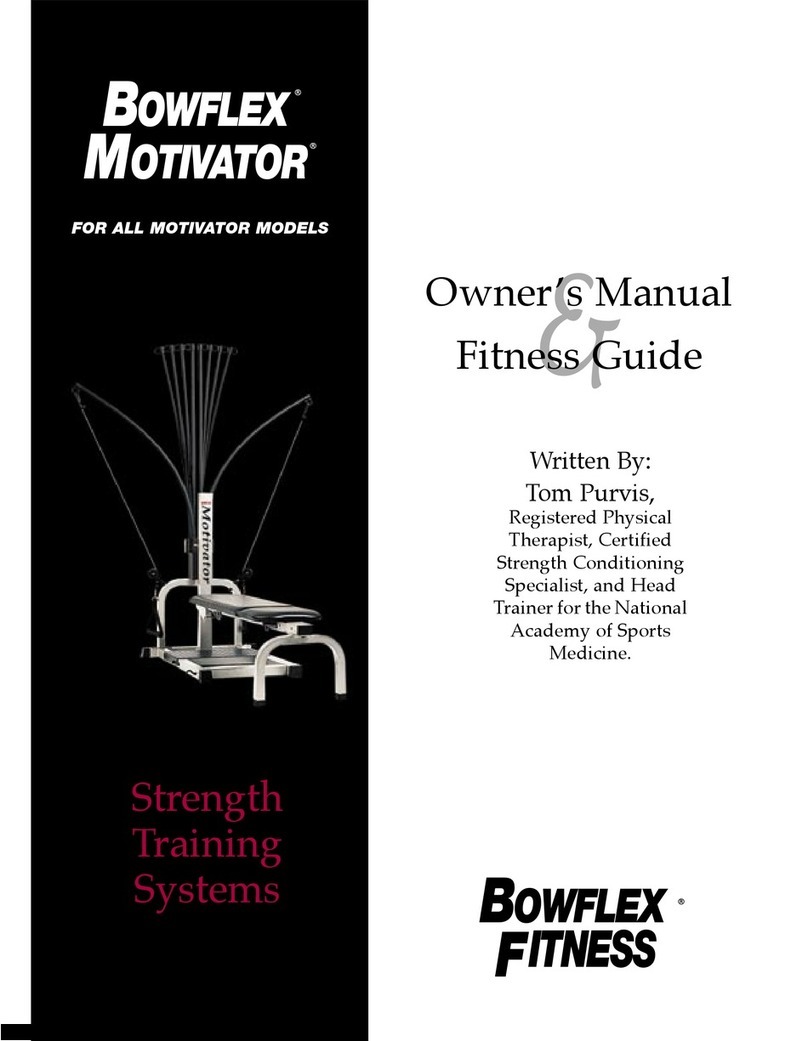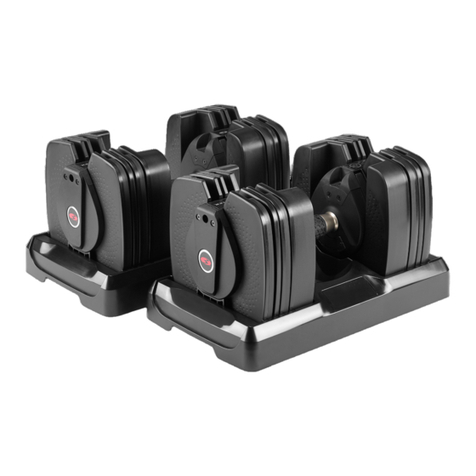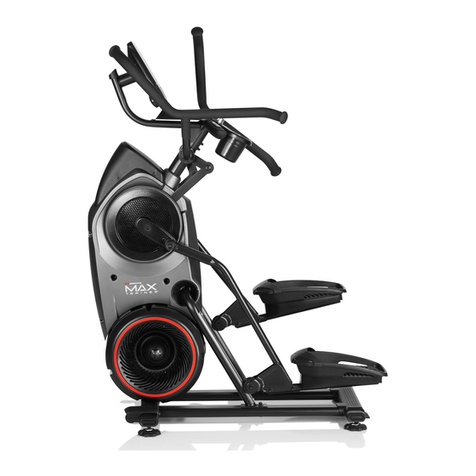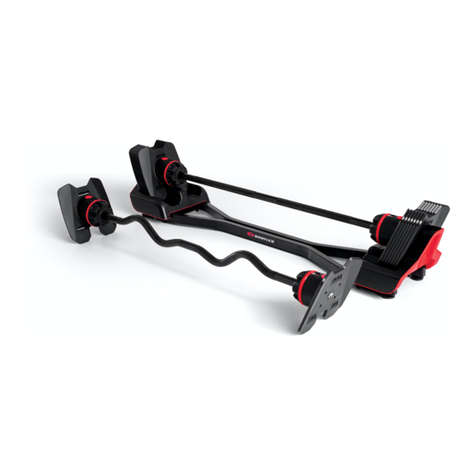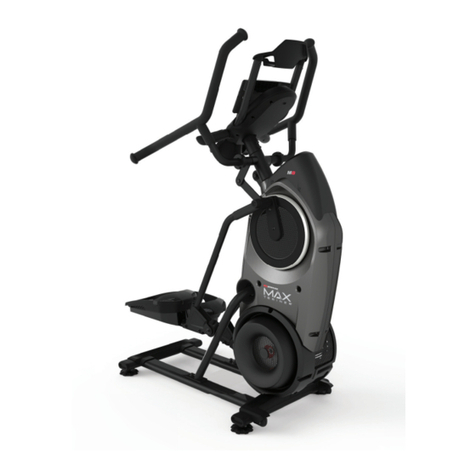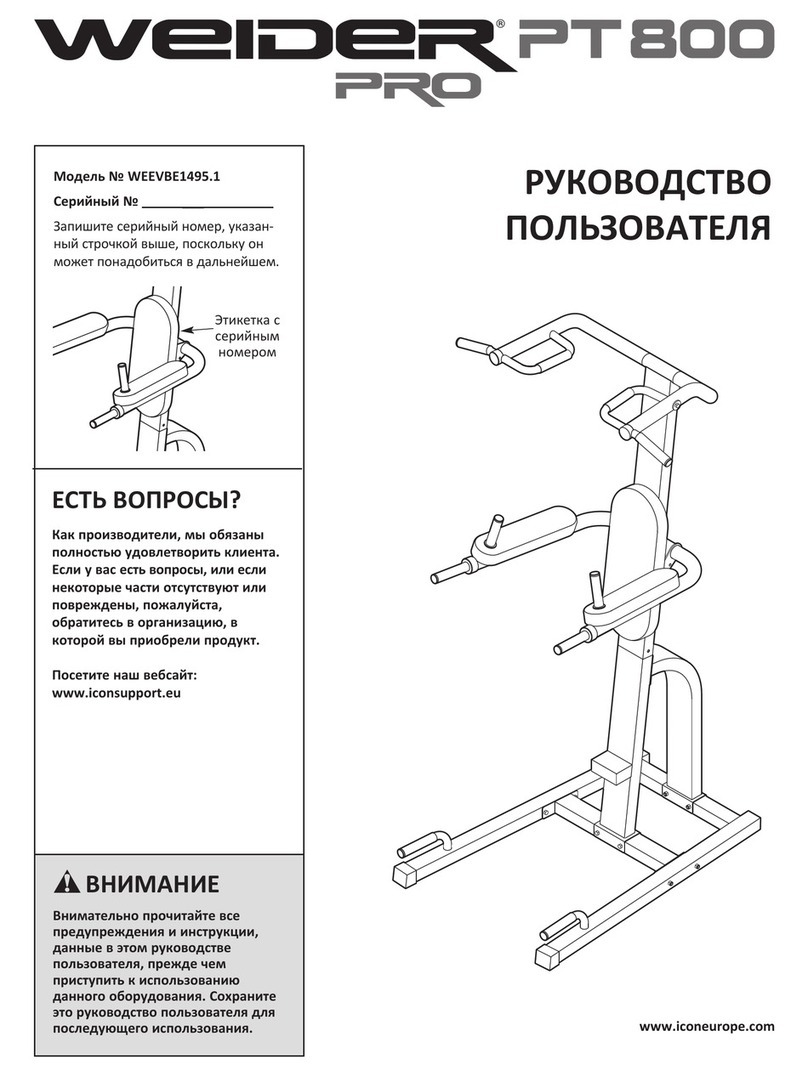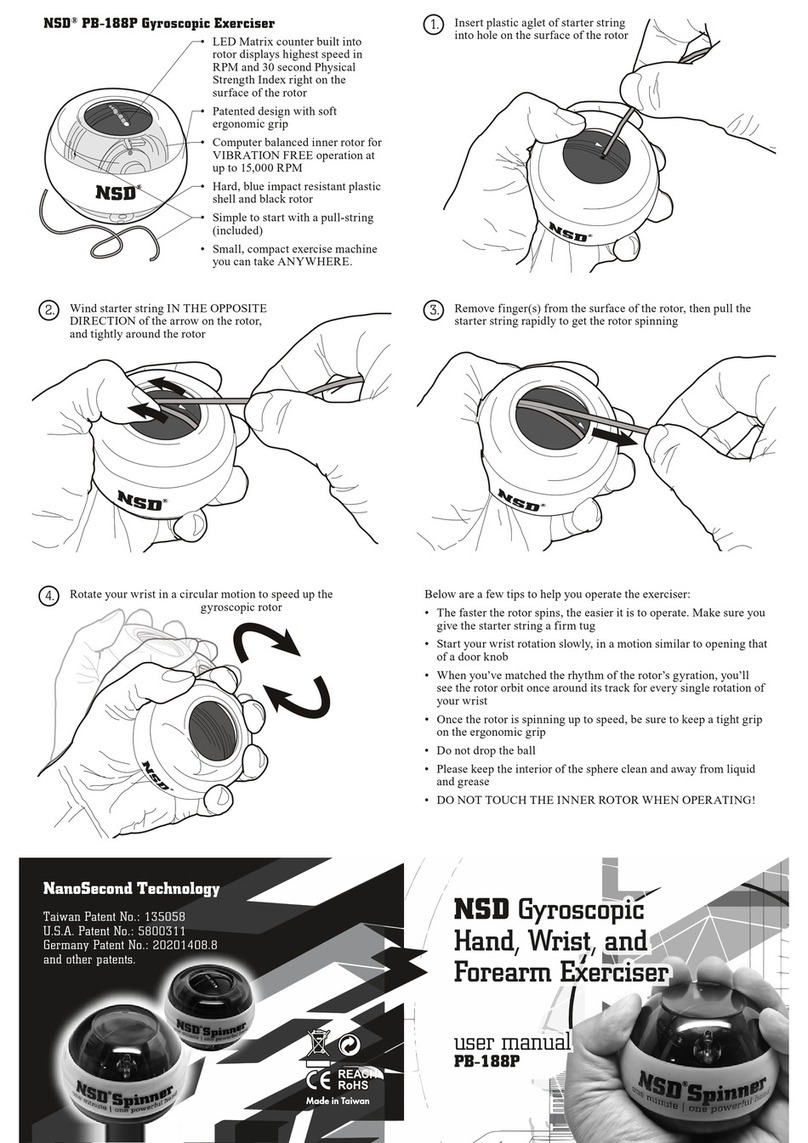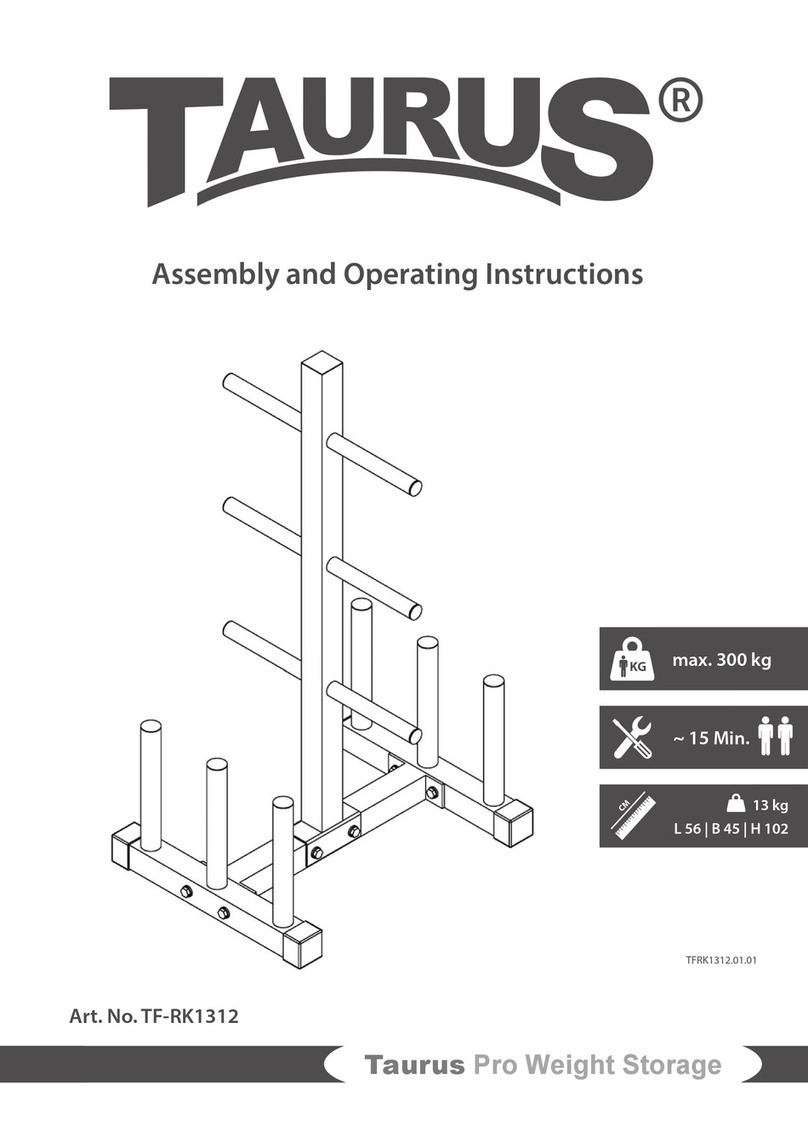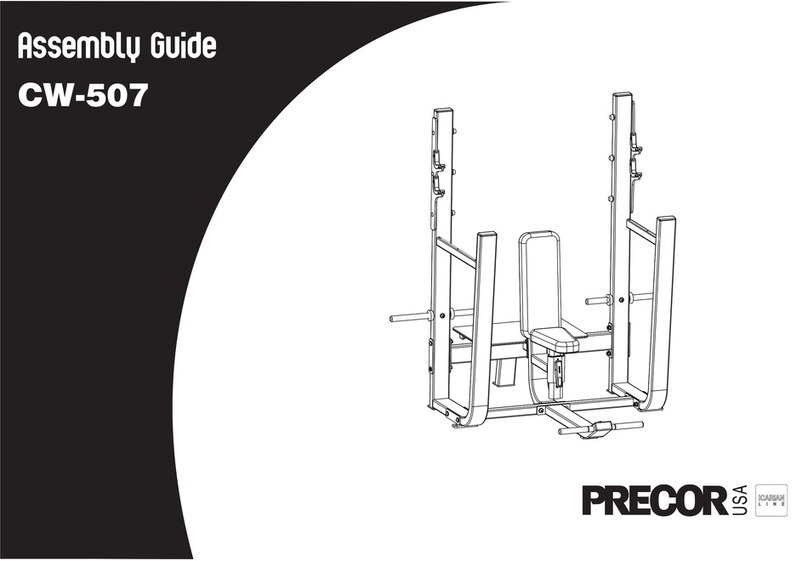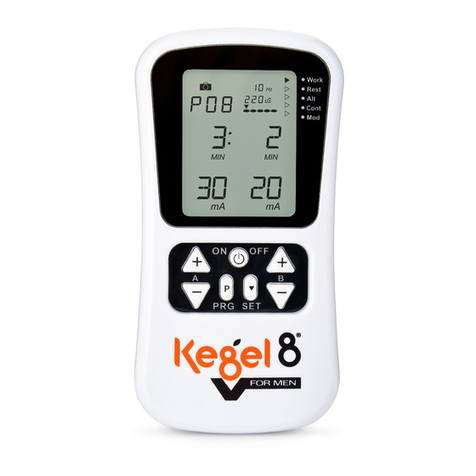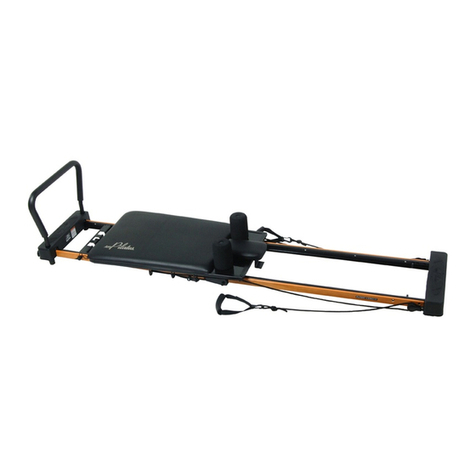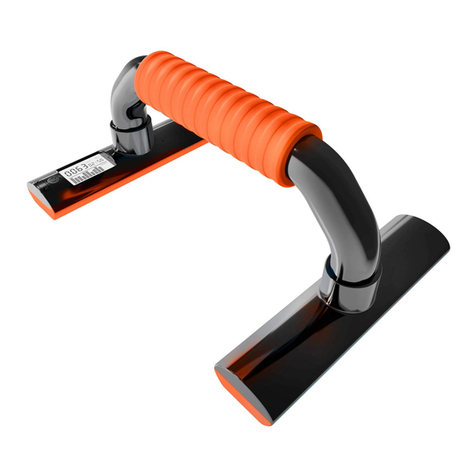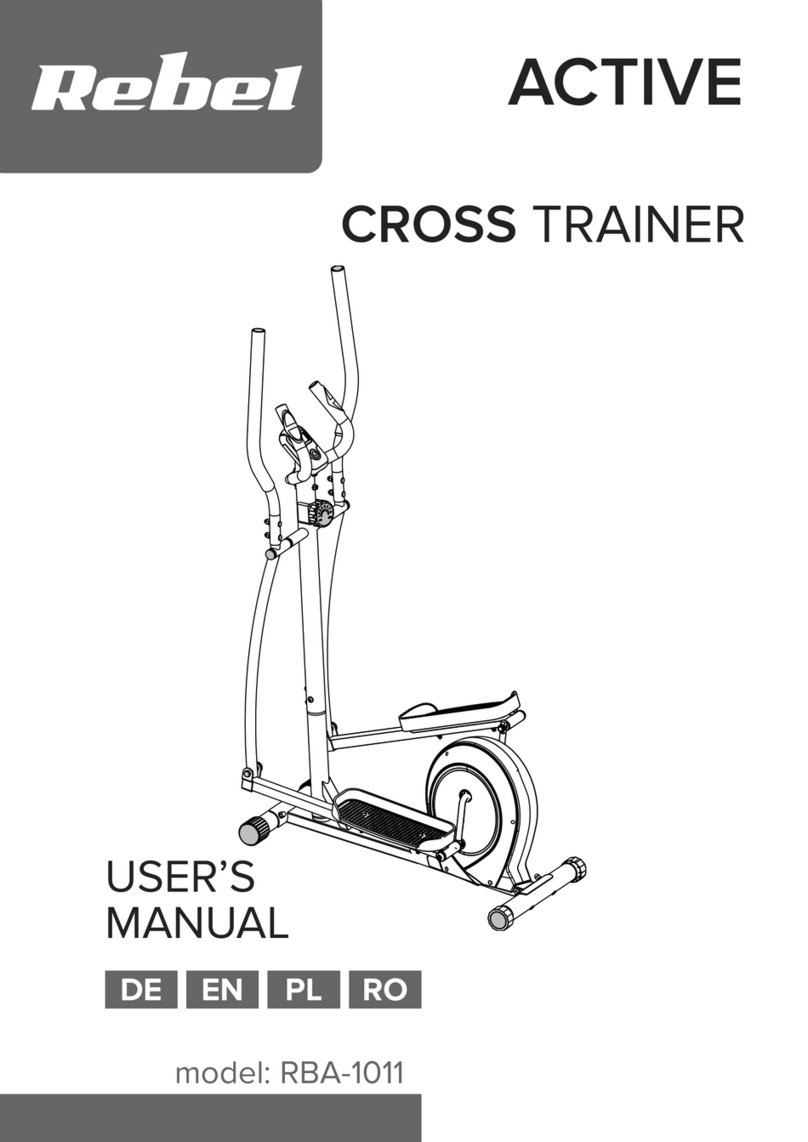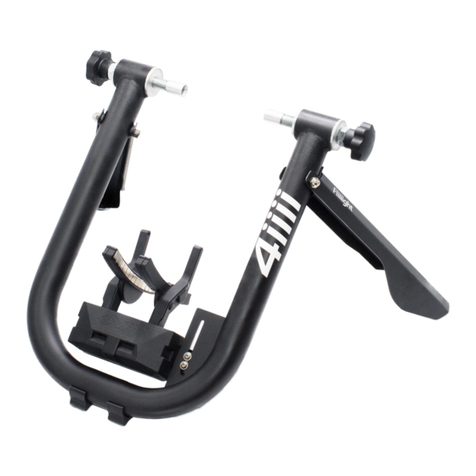Using Your Machine
Using the Bowflex Using the Bowflex
Adjustable Pulley System Low Pulley/Squat Station
Using the Bowflex adjustable pulley system is as easy as
pulling a pin and expanding the pulley out.
Pulley knobs are spring-loaded and are located on the back
of the adjustable pulley system. To extend the pulle_
simply twist the knob a couple of turns to the left, then
pull out. Next, pull the adjustable sleeve out away from the
machine until it clicks into the extended position. Then,
tighten tile knob to lock tile adjustable pulley into position.
Pulleys adjust position with the simple turn and
pull of a knob,
The adjustable
pulley system was
designed to
change the angle
of resistance to
increase tile
effectiveness of
many upper body
exercises.
Use tile pulley system in either the wide or narrow pulley
position. We've included a guide in each exercise so you
can use the pulley at the correct position.
To avoid irlitlr _ do not attempt to use tile pulley in tile
wide position when the mamml indicates to perfi)rnl the
exemise in tile narrow pulley position.
Connect tile low pulley/squat
station wit[l the squat cables.
"vVithout any resistance attached,
thread tile squat cables through
tile low pulle_ The black plastic
ball on the cable should rest
directly against the pulley and
should be on the far side of tile
pulle_ away from the machine.
The squat cable has a loop at the
end. Fasten the loop with a snap
hook to the rod cables.
Next, f_sten tile squat cables to
the squat harness, using a snap hook.
The squat cable feeds through
the low pulley, The black plastic
ball is on the side farthest away
from the Power Rods.
And finall_ attach tile
squat harness to the squat
bar using a snap hook.
Now you can add Power
Rod Resistance.
Make certain tile
adjustable pulley system
is locked and secure
befi)re adding any Power
Rod resistance to the
pulley.
Exercises in tile wide
position may require a
lighter weight than
those in tile
narrow position.
The Bowflex Ultimate adjustable pulley system allows you to work the
same muscles from different angles, depending on the width of the
pulley angle,
A
Rod Cables
uat Harness
Adjustment Buckle
_i ..............Squat Cables
Hooking up the low pulley/squat
station is easy, Once it%
together, you can use it for a
wide variety of exercises --
including squats, flat bench
presses and bent over rows!
